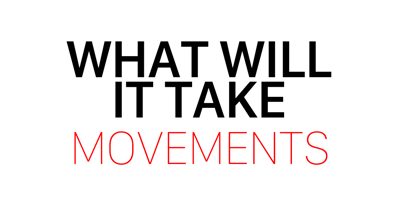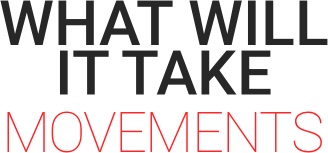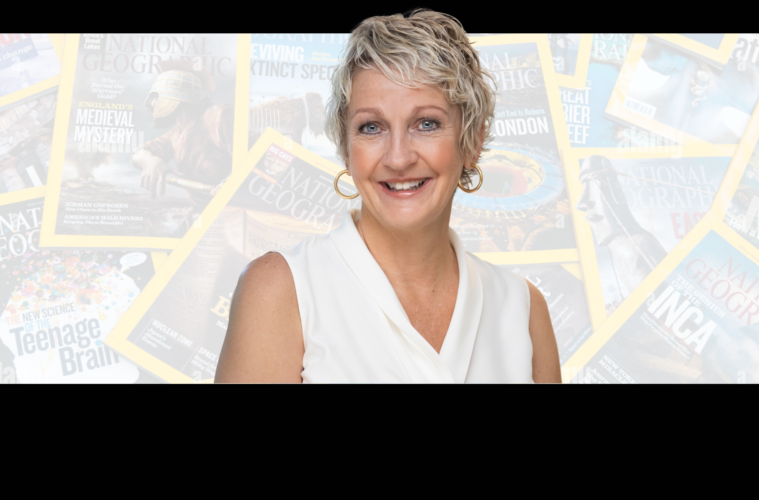By Marianne Schnall
In 2020, the National Geographic Society appointed Jill Tiefenthaler as Chief Executive Officer—the first woman to hold this position in the organization’s 134-year history. Now she is forging a new path for women and other underrepresented voices at the Society and bolstering how it shapes the narrative on some of the world’s most pressing issues. Tiefenthaler—who prior to landing at Nat Geo in 2020 had a successful career in economics and academia, including serving as provost of Wake Forest University and a nine-year tenure as the president of Colorado College—has a deep commitment to advancing work around diversity, equity and inclusion (DEI).
This dedication to leading and accelerating DEI means that the next generation of National Geographic Explorers, as well as the organization’s board and staff members, will be more diverse than ever before. In fact, National Geographic announced in January that they reached gender parity on its board of trustees, and 60% of Tiefenthaler’s senior team is now women.
I had the opportunity to speak with Tiefenthaler about her plans to move the National Geographic organization forward, her leadership insights and advice, and the ways in which having diverse voices and perspectives from across the globe helps Nat Geo to achieve their mission to “illuminate and protect the wonder of our world.”
Marianne Schnall: Can you tell me about your background and what led you to the National Geographic Society?
Jill Tiefenthaler: I grew up at a farm in Northwest Iowa in a tiny little close knit community and made my way to Saint Mary’s College at Notre Dame, where I sort of fell in love with the liberal arts and economics. But most importantly, I had, for the first time, these professional women role models who were my professors. So I pretty quickly thought, “That’s what I want to do with my life, and I never want to leave college.” So I went off and I managed to do that for many, many years. I got my PhD at Duke and then was a professor and then an academic administrator and eventually a college president. I really thought I would spend the rest of my career in academia, which I loved.
And then one day I got this call from a search consultant who said that I had been nominated for the position at National Geographic, and I was sort of like, “What? I’m not a scientist, I’m an economist.” But then I really learned what they were looking for and thought, “You know, this is not what I planned, but it’s National Geographic, right?” I’d grown up on the farm and the magazines were sort of a portal to the world for me as a kid, and I have always loved National Geographic. So I thought, “I have to at least pursue this.”
And I’m very thrilled that I did. I always tell people I never thought I’d leave higher education and be surrounded by more interesting people, but I did. I’m lucky enough to be in that position, and it has really been energizing and exciting.
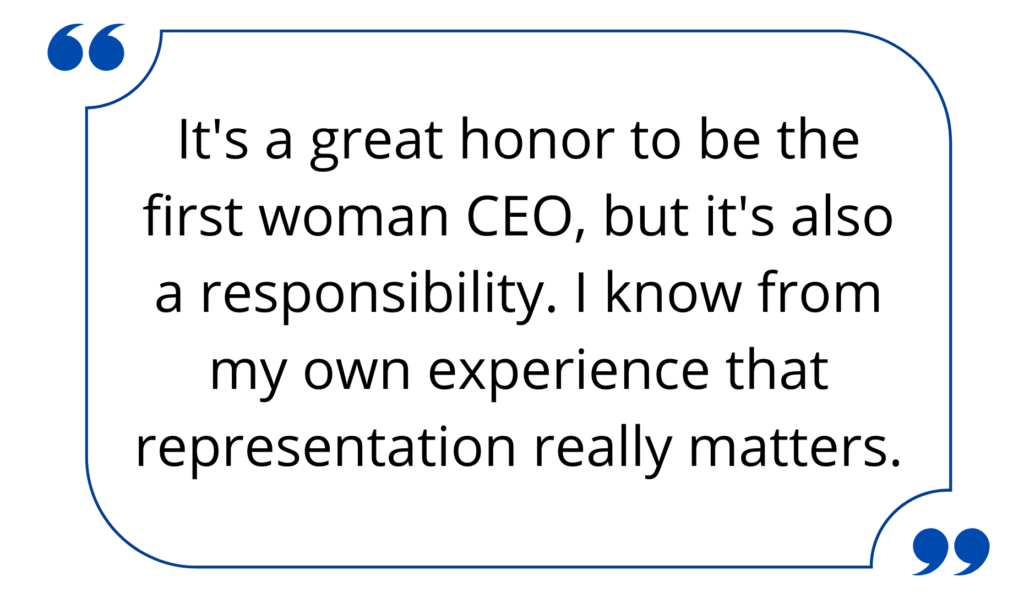
Schnall: What role or purpose do you see the National Geographic Society fulfilling in the world?
Tiefenthaler: We have this incredibly mission-driven organization with a great mission: to illuminate and protect the wonder of our world. We do that in a couple ways. First, our theory for change is that we’ve always been this science-based organization and we have been able to advance knowledge and to then find ways to disseminate that knowledge and share it with the world. And then, of course, also in our mission is the protection. How do we do both the illumination side, storytelling and education, but also have protection and conservation programs that have measurable and outsized impact? And that really makes National Geographic a unique organization because there aren’t too many organizations that come at their theory of change in both those directions.
With the world facing biodiversity loss and climate change, that protection mission has never been more important. And with some of the challenges to science in recent years, having a trusted brand like National Geographic out there to keep science and fact-based decision making at the forefront is another big part of our mission. So that’s where I think we can really make a difference.
And I think one of the things that makes us really special is that we do it through this international community of National Geographic Explorers, scientists, educators, storytellers and conservationists—incredibly talented and amazing people. We have about 6,000 of them that have been funded by the Society over the years around the globe in more than 120 countries. I think all of them together show where we’re going–this global reach really is our mission and also really trying to bring a variety of voices to the table.
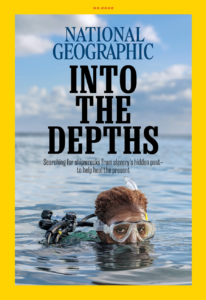
Cover of March 2022 Issue of National Geographic featuring Explorer Tara Roberts
Schnall: Can you share a little bit about some of these Explorers and the work they’re doing?
Tiefenthaler: Rosa Vásquez Espinoza is a Peruvian biologist. She studies the Amazon’s stingless bees and their special honey. And she’s also done some work on Amazon’s boiling river area. We elevate and support her work, and then help share her work so we can learn about how important it is to protect that region.
And another example that we highlighted in March was our Explorer Tara Roberts. We had a great podcast with her, and she was on the cover of the magazine. She is following a group of Black scuba divers, historians and archeologists, as they are searching and helping to document the slave trade shipwrecks around the world.
Schnall: You have broken a glass ceiling being National Geographic’s first woman CEO in its 134-year existence. How do you feel about that?
Tiefenthaler: It took quite a while; I think it took a little too long, actually. It’s a great honor to be the first woman CEO, but it’s also a responsibility. I know from my own experience that representation really matters. As an economist, I was often one of the few women in the room. There were only two of us in my graduate class. I was the first woman on the tenure track in my department, the first woman provost at Wake Forest. So there have been a lot of firsts. I think the signal for the Society that I’m sitting in this role is that we are really headed toward a much more inclusive place at National Geographic. We were really excited and announced in January that we reached gender parity on our board of trustees, which is a big change for National Geographic. And now half of our grants at National Geographic are going to women, about 60% of my senior team is now women, and we’re also working really hard in other areas of inclusion as well.
I think for the Society, the importance of diversity and inclusion is obviously the right thing to do, but it’s also so much about our excellence and really bringing the best voices and the best talent to the organization. So another big step for us here is we just hired our first Chief Diversity, Equity and Inclusion Officer, Shannon Bartlett, who joined us last summer, and she and her team are really working hard with our Explorers and making sure we have the best around the world, but also in the workplace to make sure that we have a really inclusive workspace in this time when we bring people back into the office to really build that inclusive kind of innovative workspace that we’re dreaming about.
Schnall: National Geographic recently launched its first diversity statement, which centers around the principle, “Your Story Matters.” Can you explain what that means and looks like in practice?
Tiefenthaler: Part of an inclusive workspace is really making a place where people can do their best work and bring their whole selves to work. We really believe that what makes us stronger is the diversity of all the people that are part not only of our workplace but our entire community. So we worked really hard on people sharing their stories. The other thing we learned during the last two years of the pandemic is that work and home are not so separate anymore. So much of it has been integrated together, with the kids walking in the background or the dog barking—whatever it is. There’s been so much more a blend of the personal and work life, and having people’s stories be honored and everybody really feeling like they can be themselves at work is how we get to the kind of inclusive work environment that we want at National Geographic.
Schnall: How do you think the Society has changed and will continue to change under the leadership of women?
Tiefenthaler: We have a wonderful 134-year history, but it’s also a complicated one and some parts of it we’re not so proud of. We were an organization that had a colonial past. A lot of our history was the white male explorer off “discovering” places that actually had been discovered by many others before. So how do we reckon with that past and also pivot toward a future where not only are we bringing representation of women into the picture, which hasn’t always been true in the past, but also our BIPOC populations and our international Explorers?
We’re trying to do much more. About 60% of our Explorers are now international, where they’re doing work in their own home countries. We’re trying to use more and more of our storytellers to be telling their own stories on the ground. We have this wonderful new group of journalists around the world who we can call on for all kinds of projects going forward, and that ability to move away from “parachute science” or “parachute storytelling” is another way that we’re really embracing a more global and a more inclusive model and really empowering people to tell their own stories. One of our Explorers, Noel Kok who runs our African wildlife filmmaking group, said it really well. He said, “If you want to change the story, you need to change the storyteller.” So we’re working really hard to build capacity around the globe and in the U.S. with our marginalized communities.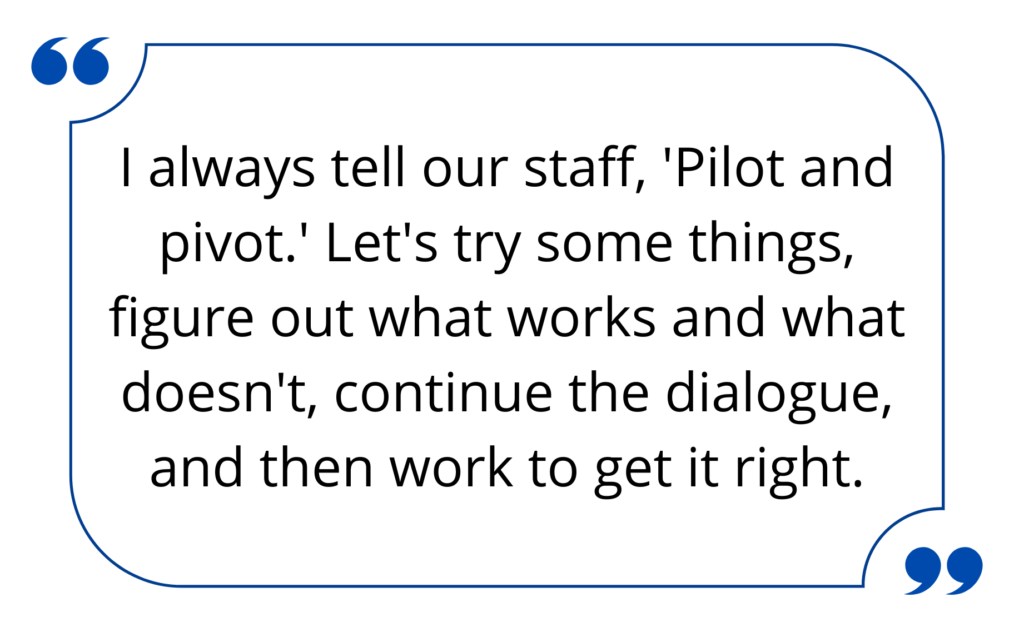
Schnall: How would you describe your personal leadership style, and what have you learned about leadership throughout your career and your experiences as a leader?
Tiefenthaler: I really like to think that I’m a listener and I try to do very deep listening. When I started as a college president over a decade ago, I called my first year there a “year of listening,” where I listened to all of our constituencies and then wrote something back to them before we sort of thought about our next stage of our future. And I did the same thing when I landed at National Geographic. I did a lot of listening and wrote a document back to the community, and we used that document as a basis for our strategic planning.
But listening is never done; you can’t check it off the list. So I would say the combination of listening and inclusion, but then also being willing to be a leader and make decisions and be decisive when necessary. And also then being able to pivot. I always tell our staff, “Pilot and pivot.” Let’s try some things, figure out what works and what doesn’t, continue the dialogue and then work to get it right.
Schnall: What advice would you have for women leaders or for women aspiring to be leaders?
Tiefenthaler: First, I would always say I think a lot of my leadership is built on watching other leaders. I worked for many different presidents in provost and academia department chairs, and I always tried to watch and think about what their strengths were and tried to learn from each of their strengths. I had a wonderful leader who was amazing with gratitude and just knew how to recognize people and make people feel great. I had another boss who was just amazing with not only identifying and hiring talent but also growing and nurturing talent. Unfortunately some of us also have to work for leaders that make mistakes, so it’s also good to learn from others’ mistakes when you can.
And the other thing is, let people mentor you. I always felt very lucky to have really great mentors in my life—men and women who were so helpful to me in my career. But having great mentors means being willing to be a mentee, to really respect their experiences and wisdom and invest time in relationships and listen to the criticism, as well as the accolades. And then we have to pay it back, right? So be a mentor when you can: find those who can really benefit from your support and give them latitude to act by delegating and empowering liberally, but also don’t be afraid to provide lots of good feedback. I was lucky enough to work with Maya Angelou when I was at Wake Forest. She was a professor there when I was provost. I always loved her quotes, and one of my favorites was, “A leader sees greatness in others. You can’t be much of a leader if all you see is yourself.”
Schnall: Having visible role models is so important for inspiring young people today, and I thought you would enjoy knowing that watching Nat Geo documentaries on amazing women trailblazers like Jane Goodall and Sylvia Earle inspired my daughter Lotus to launch a project with Jane Goodall’s youth service program Roots & Shoots and to write a children’s book series aimed at educating young people about the environment. And that’s just an example from my own house! What are your thoughts on how National Geographic has been supporting and amplifying the work of these female explorers to inspire future generations?
Tiefenthaler: Jane Goodall and Sylvia Earle are these amazing women who really broke barriers, not only for the work that they’ve done, which has just been tremendous, but to think about Jane, what she did and when she did it as a young woman—the bravery that took, but also I give my predecessor such great credit. They invested in Jane, this young woman, which was kind of a risk at that time, but they saw real talent there. Sylvia often tells this story about how she was denied the opportunity to do this underwater project with men, so she set up her own all women led team and they lived for two weeks under the water 50 years ago. So we have these really audacious women who have broken so many barriers and are so inspiring, and Sylvia and Jane are among them.
We also have some amazing younger women. We have our first Explorer Trustee, Paula Kahumbu, who was also our Rolex Explorer of the year last year. And she’s the CEO of WildlifeDirect in Kenya. She is amazing, and the work she does inspires me every day. She has a show called Wildlife Warriors in Kenya, bringing the story of wildlife documentaries to Africans because there have been so many more wildlife documentaries about Africa made for North Americans than for Africans themselves. She also has a new project with National Geographic Kids where they’re going to do filming with and for African kids about African wildlife and conservation efforts there. So there are inspiring women that are out there with National Geographic support.
Schnall: I think the work you’re doing has never been more important, and I really commend you for being so intentional about uplifting diverse voices while doing it. Who are the women that inspire you?
Tiefenthaler: Those explorers I just named; also, having grown up at a farm in Iowa, I was so fortunate to be surrounded by my grandmothers and my mother who were such strong women. Everything was sort of equal on the farm; it was all kind of a collective effort. We had this small German Catholic community and these women would put on pancake breakfasts and spaghetti suppers and everything else for the churches, but also ran these farms, and they were powerful and strong women.
And then I went to a Catholic women’s college where I was surrounded by these amazing nuns. I went to Catholic school my whole life, so I had these very strong women role models throughout my career. And then to step into these fields, which were so male dominated, it’s been a privilege to be able to be a part now of lifting up the voices of this next generation of strong women, and at the same time that we can point to people like Jane Goodall, Sylvia Earle, Beverly Joubert, Louise Leakey, and others that are some of our luminaries at National Geographic as well.
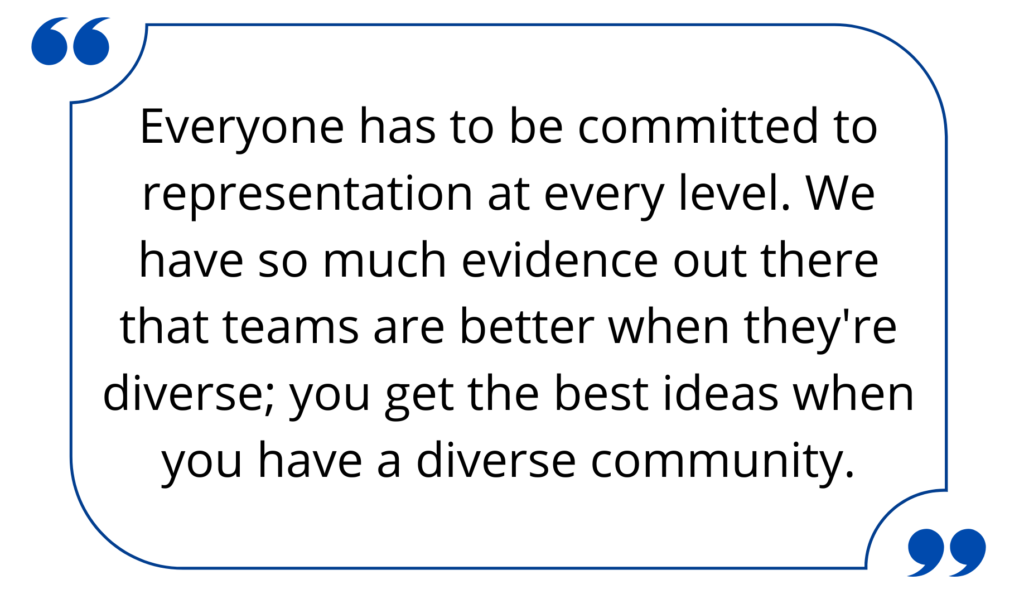
Schnall: The progress of advancing women’s leadership and breaking glass ceilings has been really slow. What do you think it will take to really create a more equitable world?
Tiefenthaler: It is actually going to take commitment. Women and men and everyone has to be committed to representation at every level. And I do believe it’s about excellence. We have so much evidence out there that teams are better when they’re diverse; you get the best ideas when you have a diverse community. So I’m just convinced that as we continue to have more women and those from other underrepresented groups, those are going to be the organizations that will race to the top and others are going to come along.
For more information, visit National Geographic Society.
This interview originally appeared at ForbesWomen.
Marianne Schnall is a widely-published interviewer and journalist and author of What Will It Take to Make a Woman President?, Leading the Way, and Dare to Be You for girls. She is also the founder of Feminist.com and What Will It Take Movements and the host of the podcast ShiftMakers.
